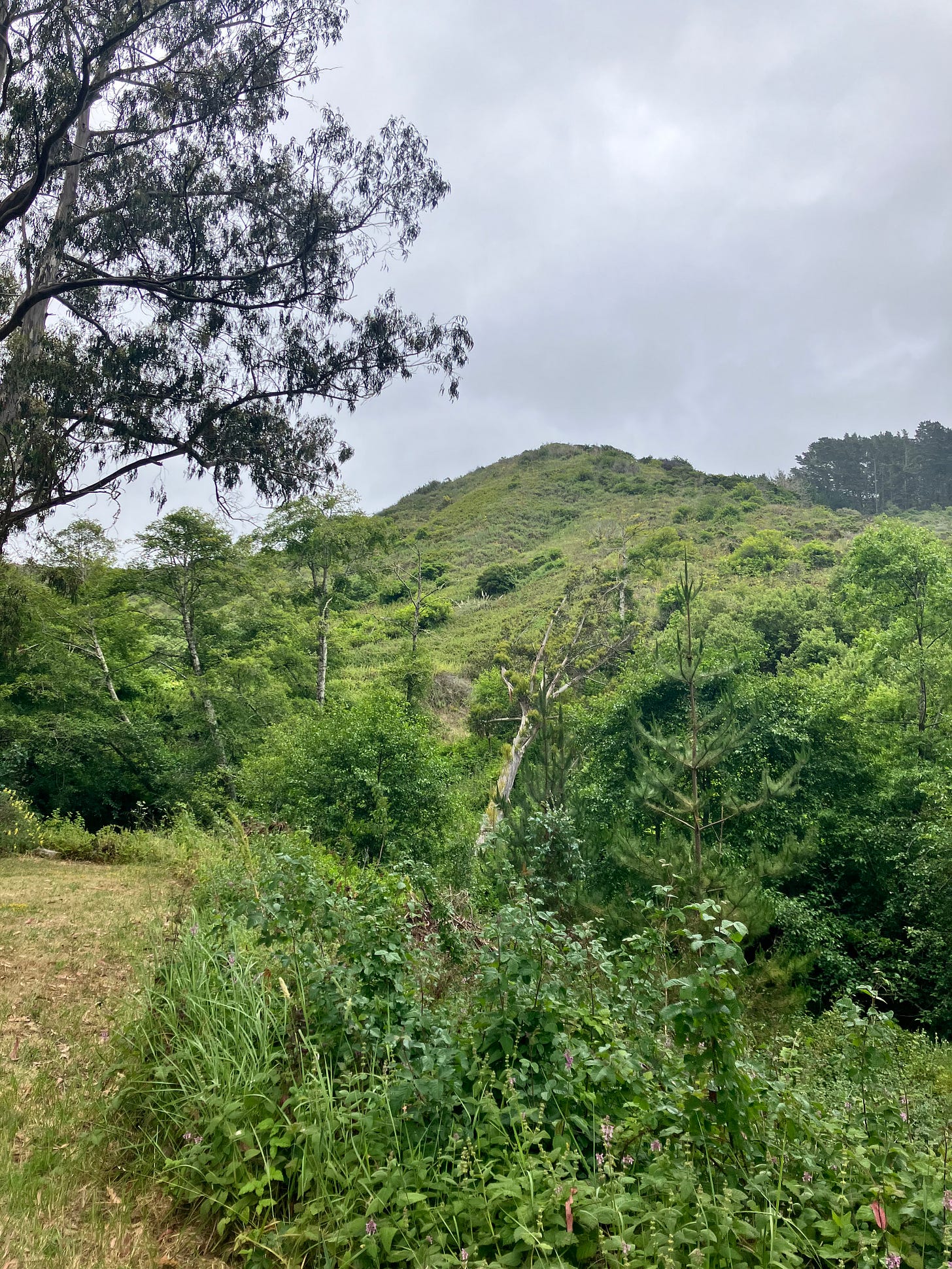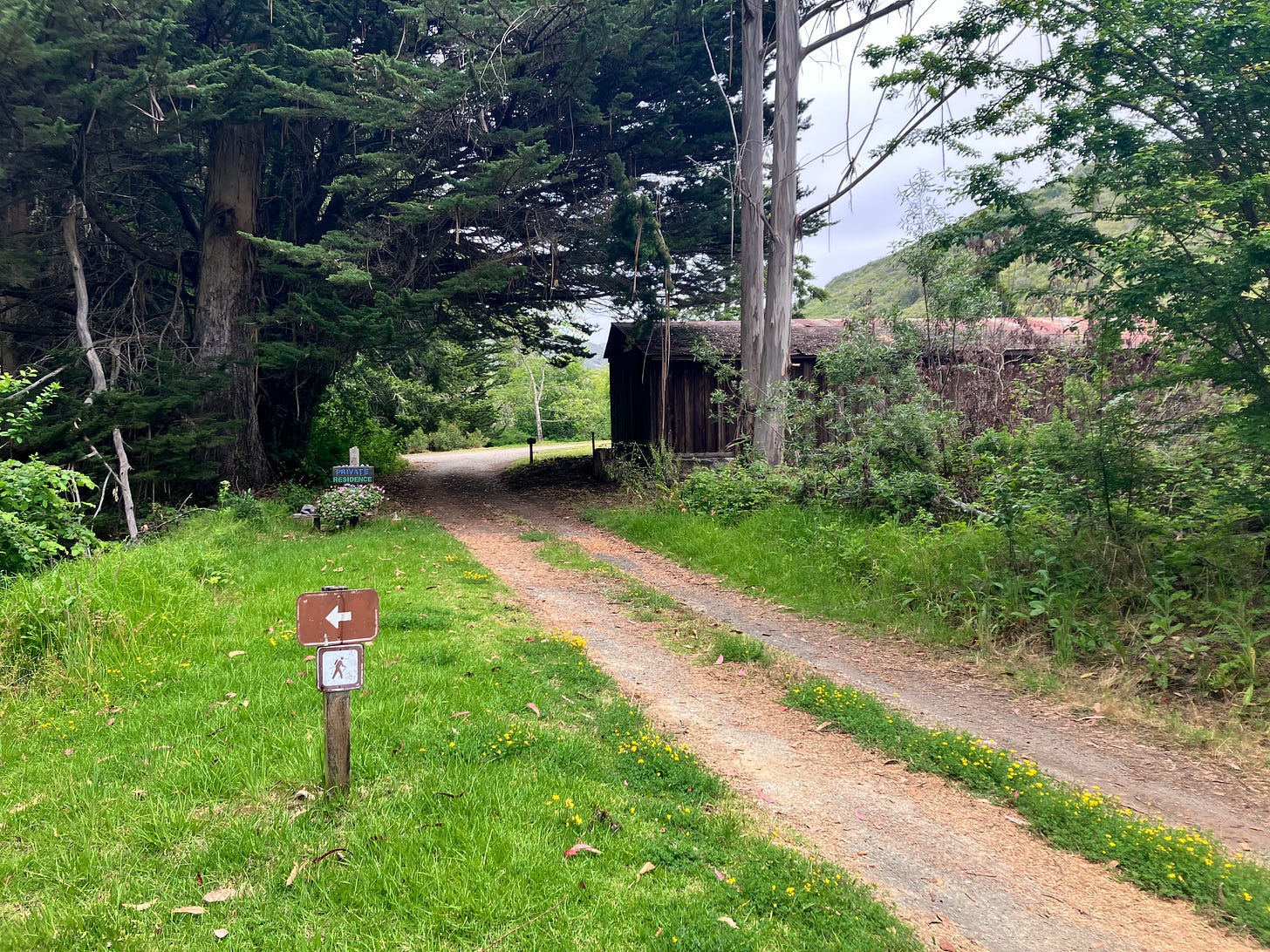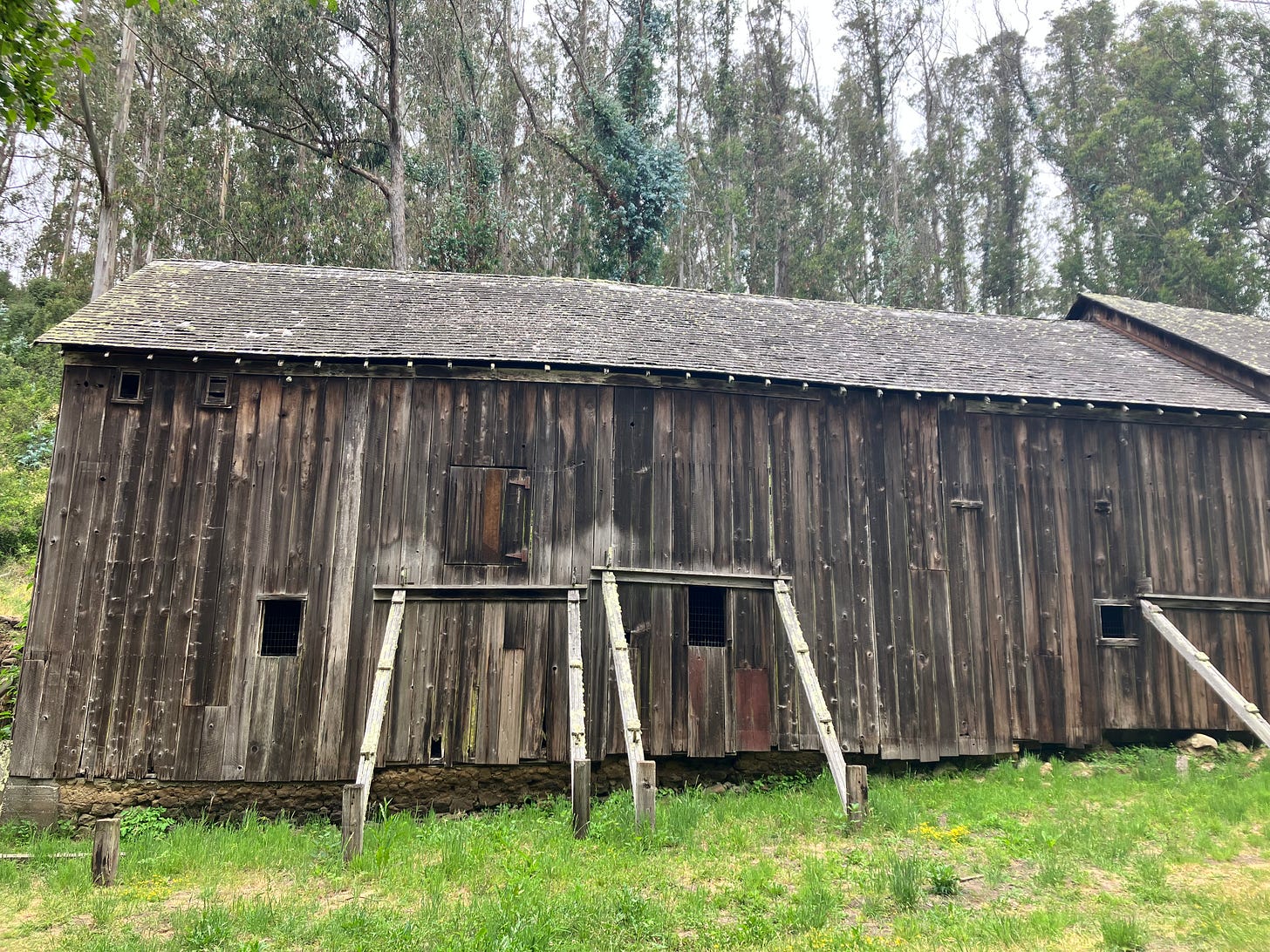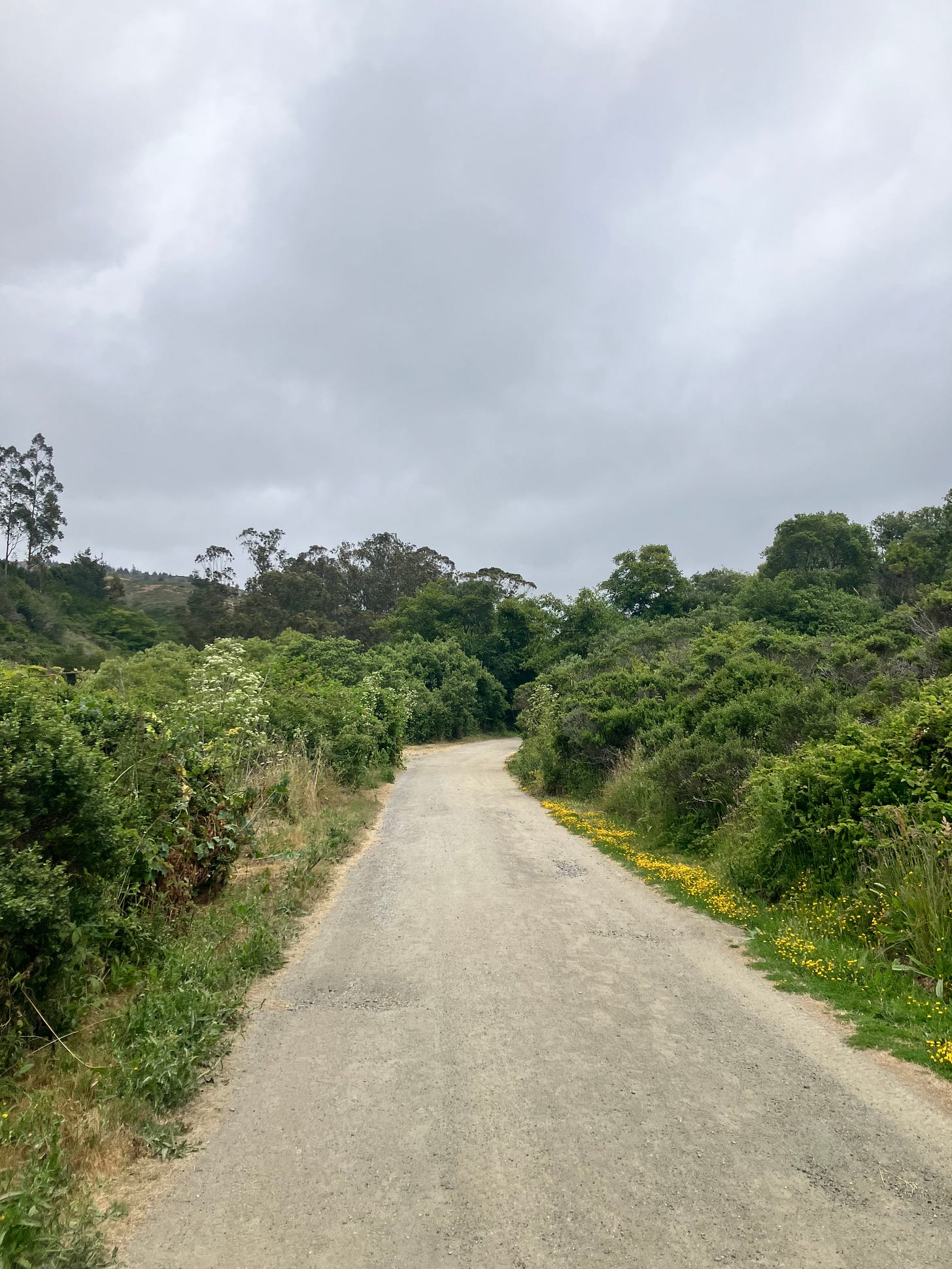In the year or so before the pandemic, part of my work assignment was in Santa Cruz, the hippie college town 75 miles south of San Francisco. Instead of taking the 101 freeway down the peninsula, past the airport and through the bustling cities of Silicon Valley, I would take the 1, winding my way along the Pacific coast. It was 10 or 15 minutes more of driving but the extra time was worth it. I drove past farmland and coastal prairie grazed by cows and beautiful mountains and cliffs and beaches. I’d see windsurfers out in the water and wildflowers bloom on the hills and the fog slowly burning off the fields of Brussel sprouts.
It’s a marvel that so much open space exists in the densely-populated Bay Area. San Mateo County, which the majority of my driving route went through, is 10-times the size of San Francisco but has about 100,000 fewer people living there. Most of those people live on the cities dotted along the Bay side of the peninsula, leaving the land between Pacific Coast and the mountains sparsely populated.
The preservation of this open space didn’t happen by accident. As the Bay Area boomed in the 1960s, much of the land south of San Francisco, which had been used for farming and ranching for hundreds of years, started being developed. Soon, suburban subdivisions were expanding and paving paradise. A group of folks decided to band together and protect the land for future generations and, in the 1970s, the voters created the Midpeninsula Regional Open Space District to protect large swathes of San Mateo and Santa Clara Counties from development.
On top of these protected spaces and other county parks, San Mateo County is also home to 22 state parks and beaches. Andy and I headed to one of them, Burleigh H. Murray Ranch, last week. Unlike during our previous visits to state parks in San Mateo, our visit to Murray Ranch was blessed with the gray skies and cool breezes more typical of a San Francisco summer. The waves on the Pacific were high and foamy and intense. The angry ocean was a magnet for surfers; Half Moon Bay was dotted with dozens of surfers in their black wetsuits.
We turned off the 1 and into the mountains, past fields of lettuce and around a few ranches until we came to the tiny parking lot for Murray Ranch. The parking lot was surprisingly empty given the hordes of people we drove past along the 1; I guess everyone wanted to go to the beach instead of an old dairy ranch…
We started up the dirt road and through a narrow, lush valley. The first thing I noticed was the noise. I’m used to the dry crackle of the Eastern Sierras or the cathedral silence of the Redwood groves or the roar of the ocean when I’m outside in California. I was surprised at how much life I heard at Murray Ranch. Humming insects, and birds noisily flapping everywhere and calling to each other, and little creatures moving in the bushes. Everything was so green and sumptuous and alive.
We continued down the twists of the path, occasionally walking across little wooden bridges that crossed seasonal creeks. There’s not much water in them now, though it was surprisingly clear. I tried to identify some plants. The tall eucalyptus trees were a gimme as were the lupines. I found a tall white flower that was either Henderson’s Angelica or Hemlock, so I think I have some more studying to do.
The flowers (whatever they were) provided nice layers of color amidst the green. Around one bend was a particularly striking combination — yellow flowers crept along the path, with taller purple flowers behind them, then even taller white flowers behind those (the possible Hemlock/Angelica) and finally in the far back, a row of trees (California Buckeye! Another identification win!) with blooming white flowers. The layers of shades of green with pops of color stopped me in my tracks.
We kept going down the road a mile or so until we came to a crossroad of sorts. The dirt road continued to an old wooden house where I think the park rangers live; a sign said private. The other path was to the left; a grassy track bordering a shallow creek.
The path ended with some picnic tables and a strange contraption which was not labeled or explained:
The star of the show was the barn, which is one of two known “bank barns” in California. It’s built into the hillside, apparently a common design in the Lake District in England (read here for my description of walking the Lake District). The barn is an old wooden structure, propped up by metal rods and in a state of “arrested decay.” You can’t go in it. Despite all the hype about it from California State Parks, I wouldn’t say it’s like a destination barn. But it’s worth seeing if you’re already there, I guess.
I thought there was more to hike, but the trail we found kind of petered out in the middle of nowhere, right next to an alarmingly loud group of bees, so we turned around and headed back through this valley of Eden.









My aunt thinks it's used to disc up a packed down field. I feel like all of these guesses are plausible!
horse drawn reaper for hay or wheat, grasses. Thanks for the adventure!